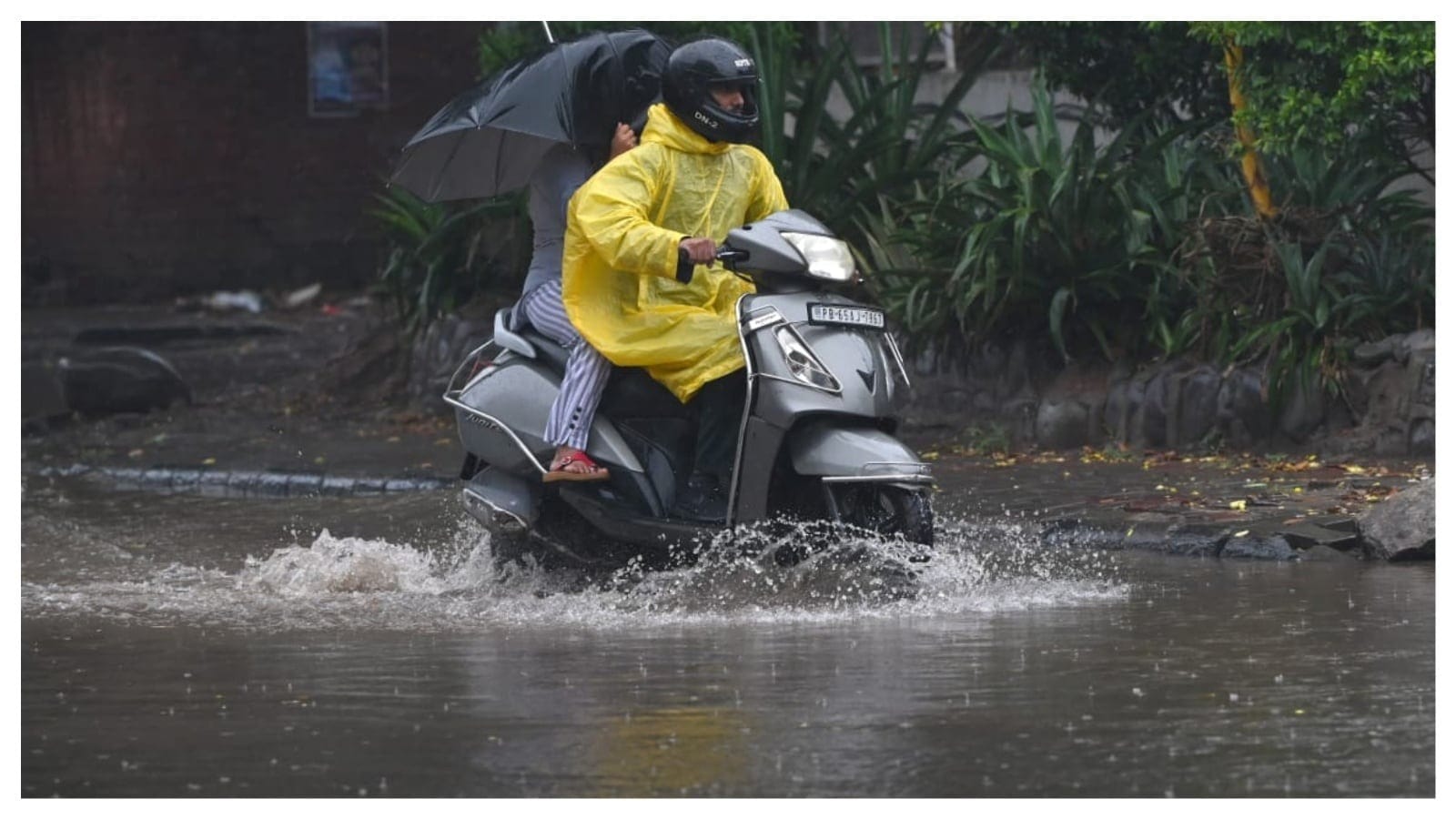After weeks of fluctuating temperatures and scattered showers, Punjab is once again experiencing active monsoon conditions. As per the Indian Meteorological Department (IMD), a yellow alert has been issued across various districts of the state until July 30, warning residents of moderate to heavy rainfall, localized flooding, and potential disruptions in daily life. The weather is expected to calm temporarily before another rainy spell resumes from August 3 onwards.
This blog delves into the detailed weather forecast for Punjab, the reasons behind the intensified rainfall, its impacts, and what residents can expect in the coming weeks.
Current Weather Conditions in Punjab
Over the past few days, Punjab has witnessed moderate to heavy rainfall across major cities including Ludhiana, Amritsar, Patiala, Mohali, and Jalandhar. The rains, driven by an active monsoon trough and western disturbances, have brought much-needed respite from the heat but have also triggered waterlogging in low-lying areas.
Maximum temperatures have dipped, with most regions hovering around 28–31°C, while humidity levels have surged past 80%, adding to the discomfort during breaks in rain.
Yellow Alert Until July 30
The IMD issued a yellow alert valid till Tuesday, July 30, signaling moderate to heavy rainfall in isolated parts of the state. Districts expected to be affected include:
- Ludhiana
- Patiala
- Sangrur
- Fatehgarh Sahib
- Mohali (SAS Nagar)
- Hoshiarpur
- Jalandhar
- Amritsar
- Pathankot
A yellow alert is a cautionary advisory, urging people to remain alert for possible flooding, road blockages, and travel disruptions. Authorities are on standby, and residents are being asked to avoid unnecessary travel during peak downpours.
Impact on Agriculture
While the rain has eased water concerns for farmers in some regions, especially in rice and sugarcane belts, it has also sparked fears of crop damage due to excessive water retention in fields. Areas where drainage systems are weak could see waterlogging in farmlands, which may impact the early stages of paddy sowing or damage ongoing horticulture.
Agriculture officers across districts are working closely with farmers to monitor fields and recommend preventive actions such as:
- Creating drainage channels
- Elevating nurseries
- Post-rain fungicide spray recommendations
Rainfall Distribution by District
As of July 28 evening, rainfall statistics for selected areas were reported as follows:
| District | Rainfall (Last 24 hrs) |
|---|---|
| Ludhiana | 45 mm |
| Amritsar | 38 mm |
| Patiala | 50 mm |
| Mohali | 33 mm |
| Hoshiarpur | 42 mm |
| Jalandhar | 41 mm |
These figures indicate above-average monsoon activity, especially when compared to the usual late-July precipitation trends.
Water Levels in Rivers and Lakes
Thanks to consistent rainfall in Punjab and the neighboring Himachal Pradesh and Uttarakhand, many of Punjab’s rivers and reservoirs are swelling. The Bhakra Dam and Ranjit Sagar Dam have recorded rising water levels, though authorities confirm there’s no imminent flood threat.
Urban lakes, especially in areas like Mohali’s Sukhna Wetland Zone and Amritsar’s Rambagh Water Body, are reported to be brimming, improving groundwater recharge but also increasing mosquito breeding risks.
Flash Flood Watch and Urban Challenges
With the ongoing rains, the Punjab Disaster Management Authority (PDMA) has issued advisories to urban municipal bodies to keep stormwater drains clear, inspect electric poles, and manage overflowing sewage systems.
Flash floods are a possibility in hilly zones near Pathankot, Ropar, and areas bordering Himachal, particularly if the rainfall rate exceeds 60 mm/hr.
Cities like Ludhiana and Jalandhar have reported temporary waterlogging, traffic snarls, and delays in local transport systems.
Forecast: Rain Break & Fresh Spell from August 3
According to IMD and private weather agencies, rainfall activity is expected to decrease slightly after July 30, offering a short break. During this window:
- Temperatures may rise marginally (up to 33–35°C)
- Winds from the west will bring less moisture
- A partly cloudy sky is expected from July 31 to August 2
However, starting August 3, another spell of moderate to heavy rains is expected to sweep through the region. This will again increase the risk of:
- Localized flooding
- Flight and train delays
- Crop vulnerability (especially in water-sensitive areas)
What Residents Should Do
To stay safe and prepared, Punjab residents are advised to:
✅ Check daily weather updates from IMD
✅ Avoid flood-prone routes during heavy rain hours
✅ Keep emergency items like torches, dry food, and medicines stocked
✅ Secure household drainage systems
✅ Follow local administration alerts via TV, radio, and official social media pages
Farmers should remain in touch with Krishi Vigyan Kendras (KVKs) and district agriculture offices for crop protection and water management tips.
Climate Context: Why the Sudden Rain Surge?
Meteorologists point to a combination of monsoon trough positioning, western disturbance interaction, and Bay of Bengal low-pressure systems moving westward as primary reasons behind the rain surge in Punjab.
Also, climate change has altered rainfall patterns over North India, with an increase in short-duration but high-intensity rainfall events, making urban flooding more common.
Conclusion
Punjab is in the midst of an active monsoon phase, with a yellow alert till July 30 and another rainy spell likely after August 3. While the showers bring agricultural relief and improved groundwater levels, they also raise concerns over flooding, urban waterlogging, and crop damage. Authorities and residents must stay alert, follow advisories, and adopt protective measures to navigate through this intense monsoon period safely.
📌 FAQs
Q1. What is the yellow alert in Punjab?
A yellow alert indicates moderate rainfall, asking residents to stay cautious and avoid vulnerable zones.
Q2. Which areas in Punjab are experiencing heavy rainfall?
Cities like Ludhiana, Patiala, Mohali, Amritsar, and Jalandhar are among the most affected.
Q3. Will it rain again in August?
Yes, a fresh rainy spell is expected around August 3, as per IMD forecasts.
Q4. Is there a flood risk in Punjab?
As of now, there’s no major flood threat, but localized flooding in low-lying areas remains possible.










